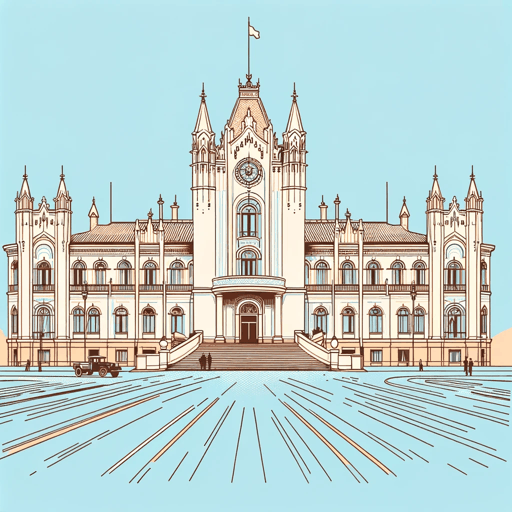55 pages • 1 hour read
Catherine Grace KatzThe Daughters of Yalta: The Churchills, Roosevelts, and Harrimans: A Story of Love and War
Nonfiction | Biography | Adult | Published in 2020A modern alternative to SparkNotes and CliffsNotes, SuperSummary offers high-quality Study Guides with detailed chapter summaries and analysis of major themes, characters, and more.
Summary and Study Guide
Overview
The Daughters of Yalta: The Churchills, Roosevelts, and Harrimans: A Story of Love and War (2020) is a non-fiction work by American author and historian Catherine Grace Katz. Katz narrates the events of the Yalta Conference—the last conference between the Allied powers during World War ll—focusing on three women who played a major role in the conference: Sarah Churchill, Kathleen Harriman, and Anna Roosevelt. Katz’s work reveals the personal and professional ambitions which informed these women’s relationships with their fathers, nations, and each other, and how they influenced the historic meeting at Yalta.
This guide uses the 2020 Kindle edition of this work published by HarperCollins.
Summary
The three major Allied powers—Britain, the US, and the Soviet Union—agreed to meet for a conference in Yalta, a holiday town on the Crimean Peninsula which was then part of the Soviet Union.
Kathleen Harriman was the daughter of Averell Harriman, the US ambassador to the Soviet Union. Kathleen arrived at Livadia Palace before the rest of the American delegation and prepared it for the conference. Sarah Churchill, the daughter of Winston Churchill, had been working as an aerial reconnaissance intelligence analyst with the Women’s Auxiliary Air Force. Sarah traveled with her father by plane to Malta, where they met with the American delegation before flying to Yalta. Anna Roosevelt lived at the White House and was one of Roosevelt’s most trusted aides and advisors, accompanying him to the conference.
Averell Harriman recognized that the Soviets had imperialist ambitions to occupy eastern European countries, such as Poland, after the war. Churchill was gravely concerned while Roosevelt felt he could persuade Stalin to abandon such plans. Roosevelt rejected Churchill’s invitations to a private meeting, worrying that Stalin would feel excluded by it, and their relationship became more fractured.
The British and American delegations arrived at Livadia. Churchill was greatly upset by news that British experts had been killed in a Mediterranean plane crash on their way to the conference, and by American complacency on Soviet oppression of Poland. Meanwhile, Kathleen Harriman wrote a letter to Churchill’s daughter-in-law Pamela, who was her best friend and her father’s mistress. One of Roosevelt’s top advisors, Harry Hopkins, lobbied for Roosevelt to meet privately with Churchill, fearing that Stalin would exploit any possible misgivings between the President and Prime Minister. Anna Roosevelt was more concerned for her father’s health, knowing he had heart trouble.
Stalin arrived and had initial brief meetings with Churchill and Roosevelt. Roosevelt tried to signal that he wanted friendly relations with the Soviets and that they could negotiate privately. There was tension between the three leaders on the subjects of post-war Germany, reparations, and other punitive measures.
Kathleen, Sarah, and Anna visited nearby Sevastopol, where they witnessed the huge scale of destruction that the Nazi occupiers had left. Meanwhile, Stalin resisted Roosevelt and Churchill’s attempts to persuade him to guarantee the exiled Polish government a chance to return, and to hold free and fair elections in post-war Poland. The dynamics between the three leaders were marked in turn by secrecy and misunderstandings, even as they tried to maintain an aura of outward cordiality. The contentious debate on Poland continued, in which the three leaders agreed to set up fair elections in Poland with a variety of Polish politicians. The three daughters explored the town of Yalta.
During the final days of the Yalta Conference, Roosevelt was quick to leave. Churchill, meanwhile, felt anxious about the outcome of the conference. The author then explores how each leader and daughter experienced the aftermath of the Yalta Conference and the early post-war days. She recounts Roosevelt’s death, and Churchill’s dismay at losing the federal election and his frustration with Stalin’s betrayal. After the conference, public perception of the Yalta agreement quickly soured as it became clear how ineffective it was at limiting Soviet domination. The author concludes her work by explaining the personal and professional trajectories of Kathleen Harriman, Sarah Churchill, and Anna Roosevelt in the decades following World War ll.

